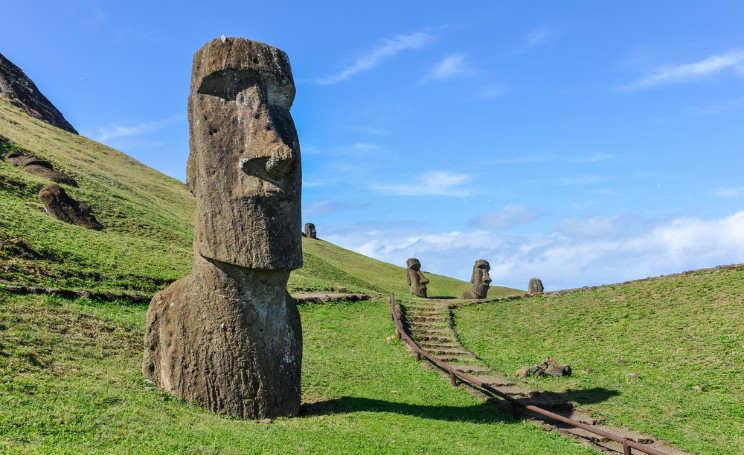Anti-aging medicine under the giant statue on Easter Island
The drug produced by a bacterium that lives under the giant statue of Easter Island not only has the ability to fight cancer cells but also helps prolong life when tested on animals and humans.
More than 50 years ago, scientists found a natural medicine hidden in the soil on Easter Island , in the shadow of the famous giant Moai statues. After half a century of research, they have obtained many positive results about the anti-aging properties of this drug, according to the Ancient Code.
Rapamycin is named after Rapa Nui , calling the Pacific Island in the native language. This is a drug produced by a bacterium that lives under a giant shadow on the island, capable of prolonging life and improving some of the conditions related to aging.
Rapamycin was first discovered by microbiologist Georges Itgrády at Montreal University, Canada, in 1964. Its anti-aging properties revealed on many different organisms. Tests on fruit flies, mice, dogs and even humans have shown positive results. However, scientists remain cautious about rapamycin use for a long time.

Scientists are testing the natural drug rapamycin found under the giant statue on Easter Island.(Photo: C&EN).
In 1969, the team at the American Ayerst Pharmaceutical Company discovered an immunosuppressant targeting the protein named mTOR in the drug. They are convinced that this is a central system of nutritional signaling, which can prevent cancer cells from dividing. After the discovery, the researchers tried to find out more information about rapamycin, including its ability to fight hard tumors and prevent rejection in patients with transplant surgery.
"Much of what we know both in terms of healing and longevity is effective in mice. We don't know if it works equally well in humans or other mammals." Adam Salmon, a researcher at Barshop's Institute for Life and Aging Research, said.
Research conducted on yeast, nematode and fruit flies showed that inhibiting the activity of mTOR protein helps prolong life. In a study in 2009, scientists found that the lifespan of adult mice increased by 6-9% when using rapamycin.
In early July, experts at the University of Washington, USA, tested the impact of rapamycin on dogs. After a few weeks of implementation, the first results they revealed revealed the rapamycin injection dogs with improved heart function. Research by biologist Matt Kaeberlein and colleagues Daniel Promislow.
Although the experiment continues, it is unclear whether rapamycin is safe to use for a long time."It's not an optimal remedy, but it works quite well. If you can adjust it better, I think this opportunity is really interesting , " said Brian Kennedy, chairman of Buck's Aging Research Institute. , share.
- Revealing the mystery of the statue on Easter Island
- Discover concussion about the body under the statue of Easter Island
- Aliens have appeared on Easter Island?
- Mysterious bacteria on Easter Island
- How did Easter Island decline?
- Scientists reveal new discoveries about Easter Island
- The origin and meaning of Easter
- The mysterious story of ethnicity suddenly disappeared 160 years ago
- The Easter Island compound extends the life of the mouse
- The most exotic islands in the world
- Techniques to help the ancient people put stone caps 13 tons on top of the statue
- India is about to have the tallest statue in the world, nearly as much as the object of American freedom
 Green tea cleans teeth better than mouthwash?
Green tea cleans teeth better than mouthwash? Death kiss: This is why you should not let anyone kiss your baby's lips
Death kiss: This is why you should not let anyone kiss your baby's lips What is salmonellosis?
What is salmonellosis? Caution should be exercised when using aloe vera through eating and drinking
Caution should be exercised when using aloe vera through eating and drinking